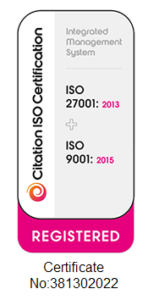Virtual Diversity: Engaging a New, Global Audience
“Diversity: the art of thinking independently together.” – Malcolm Forbes, entrepreneur and publisher of Forbes magazine
The possibilities for bringing new, diverse audiences to meetings and conferences are exponentially greater in the virtual world.
Zoom pricing points make it far easier to reach a wider audience while keeping costs down for all attendees and the organisers. It’s a bit like letting kids join a sports club for a nominal fee so you’re constantly building your next generation of supporters.
Importantly, virtual means you can reach audiences that would never normally be able to attend in-person conferences due to cost, time or travel restraints.
When we were running sessions on Vimeo, we had attendees from more than 120 countries, including Guadeloupe and Aruba.
Those individuals might be the foremost specialists in their field, but if a conference was being run in Switzerland, for example, there is almost no chance that attendees from these tiny, remote countries would attend.
Virtual opens access to people from developing nations, to more junior professionals who don’t have the resources to attend large conferences, and it allows them to hear from specialists they admire.
‘The Future of Association Convening: Envisioning for The Sciences’, a report from the American Institute of Physics, notes that to broaden participation, organisers could create conference schedules aimed at people at different points in their careers. “These schedules could include nontechnical sessions aimed at the development of soft skills and other professional development activities, as well as networking events,” the report states.
Consider your material
The consequence, however, is that organisers need to think more broadly about the type of material they are developing – from more basic information for less experienced delegates to sophisticated programmes for industry leaders.
If you’re running meetings for an international hip society, your audience might comprise those who want to hear from the leading specialists in that field, as well as a large cohort of junior doctors who want to learn more about well-established techniques from experienced practitioners.
That might mean having different days for different participants with adjusted pricing points, or it might mean running two streams. It’s also an opportunity for organisers to reach out to trainees and next-generation attendees with offers of free sessions or limited access passes, balanced against paid-for sessions that ensure there is enough money to cover costs.
Event organisers might consider, for example, developing simple online videos for young professionals to watch. Increasingly, busy young professionals are seeking out 1-hour or shorter sessions, rather than join three-day-long conferences. If I consider my own experience, I wanted to learn the best way to iron a polo shirt, so I searched YouTube for an instructive video and found exactly what I was looking for!
This is exactly what the authors of the recent American Institute of Physics report noted when they said, “Conferences of the future will extend access to the science reported at scientific conferences beyond traditional audiences, and beyond the temporal duration of the conference.”
There is a balance for events organisers, but it’s exciting to see the greater global reach that virtual conferences make possible.
People who would never get the time off work, get a visa to travel, have the funds to fly to a destination, are now attending sessions and bringing their different insights and points of view to share with a large global audience.
Leslie Robertson is the Founder of Open Audience, an audience engagement consultancy that specialises in making life sciences meetings more engaging with more positive, successful outcomes – whether in-person or in the virtual space. The Open Audience team helps to strategise and prepare pre- and post-meeting as well as providing real-time support and guidance during the meeting. Open Audience also offers customisable, multilingual engagement platforms that include interactive polling, surveys, and ideas exchange.
Know someone who would find this interesting? Share this article with them!

